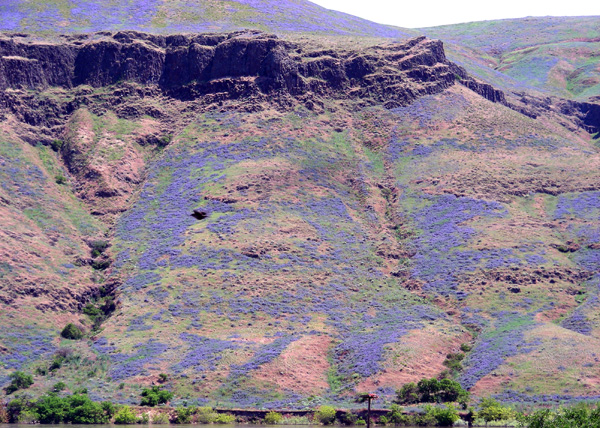
BIOL 4130/4140
Contemporary Problems in Environmental Science
Phil Ganter
Biological Sciences
Tennessee State University
 |
BIOL 4130/4140 Contemporary Problems in Environmental Science Phil Ganter Biological Sciences Tennessee State University |
| The purple in the photo is hairy vetch (Vicia villosa) in bloom on the hillsides above the Snake River in Washington. Hairy vetch is not native to the western hemisphere but was brought here as a commercial cover and forage crop. It has successfully invaded much of North America and, in some areas, has bedome locally dominant. What we see as natural is often a recently assembled collection of species that may be in rapid transition (rapid in terms of ecological time)- changes only visible over decades of observation. Notice that the vetch covers only one side of the hillocks. Perhaps small changes in available soil moisture have a large impact (no data available). | |
BIOL 4130 Syllabus Link (Fall Semester)
BIOL 4140 Syllabus Link (Spring Semester)
Course Objectives Link
Textbook Website and publisher Supplemental Materials Links
| Links to lecture notes: | Ancillary Materials Links |
| Lecture 01 Human Population Growth | |
| Lecture 02 Biosphere | |
| Lecture 03 Biodiversity | |
| Lecture 04 The Earth | |
| Lecture 05a Natural Resources I - Energy I | |
| Lecture 05b Natural Resources I - Energy II | |
| Lecture 06 Natural Resources II - Water | |
| Lecture 07 Natural Resources II - Minerals | |
| Lecture 08 Natural Resources III - Biodiversity | |
| Lecture 09 Natural Resources IVa - Land | |
| Lecture 09 Natural Resources IVb - Food | |
| Lecture 10 Pollution I - Toxicology and Water | |
| Lecture 11 Pollution II - Air | |
| Lecture 12 Pollution III - Climate Change | |
| Lecture 13 Economics and Society |
| Lecture 1 Links | |
| Estimate your ecological footprint | |
| Get Current Population Statistics | |
My
Courses Page
|
TSU Home
Page
|
BIOL
4140 Page
|
Ganter Home
Page
|
Last updated August 24, 2013